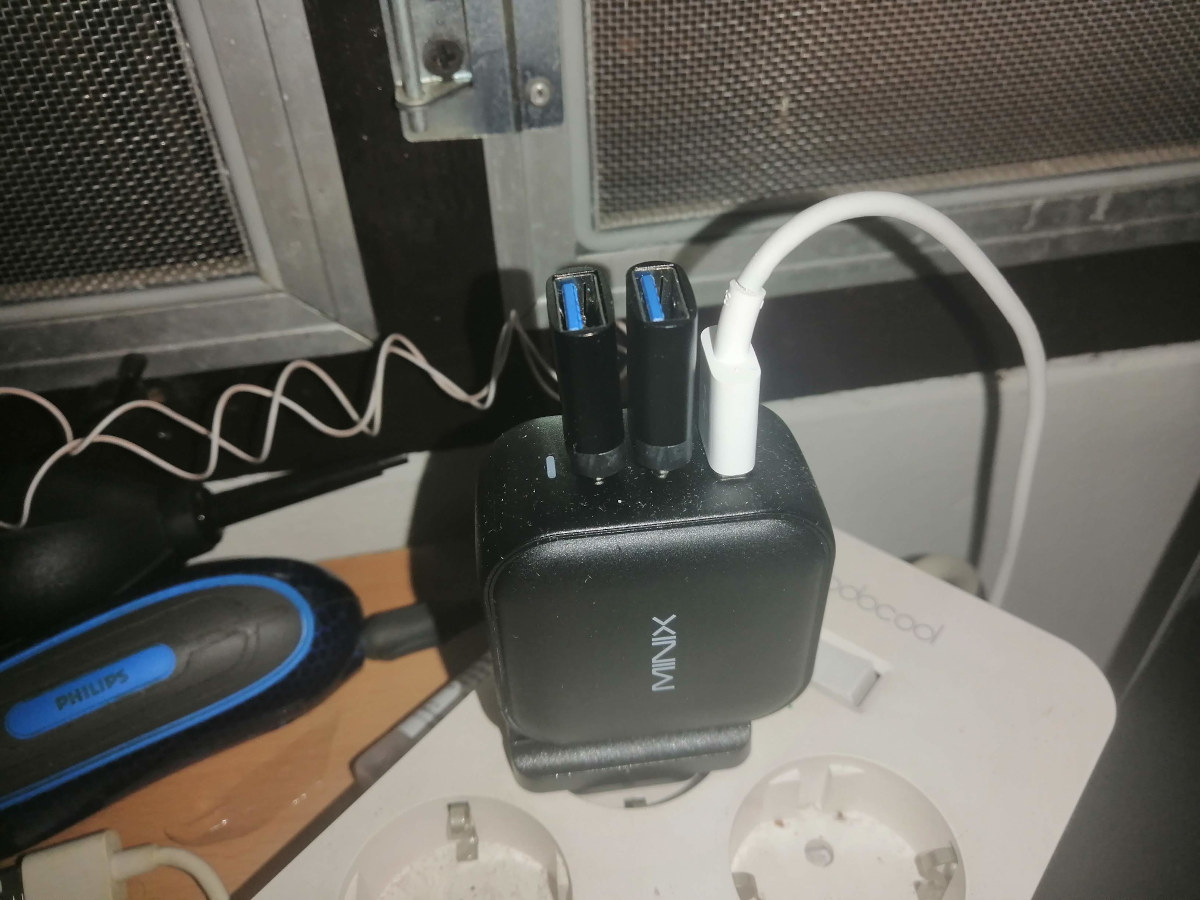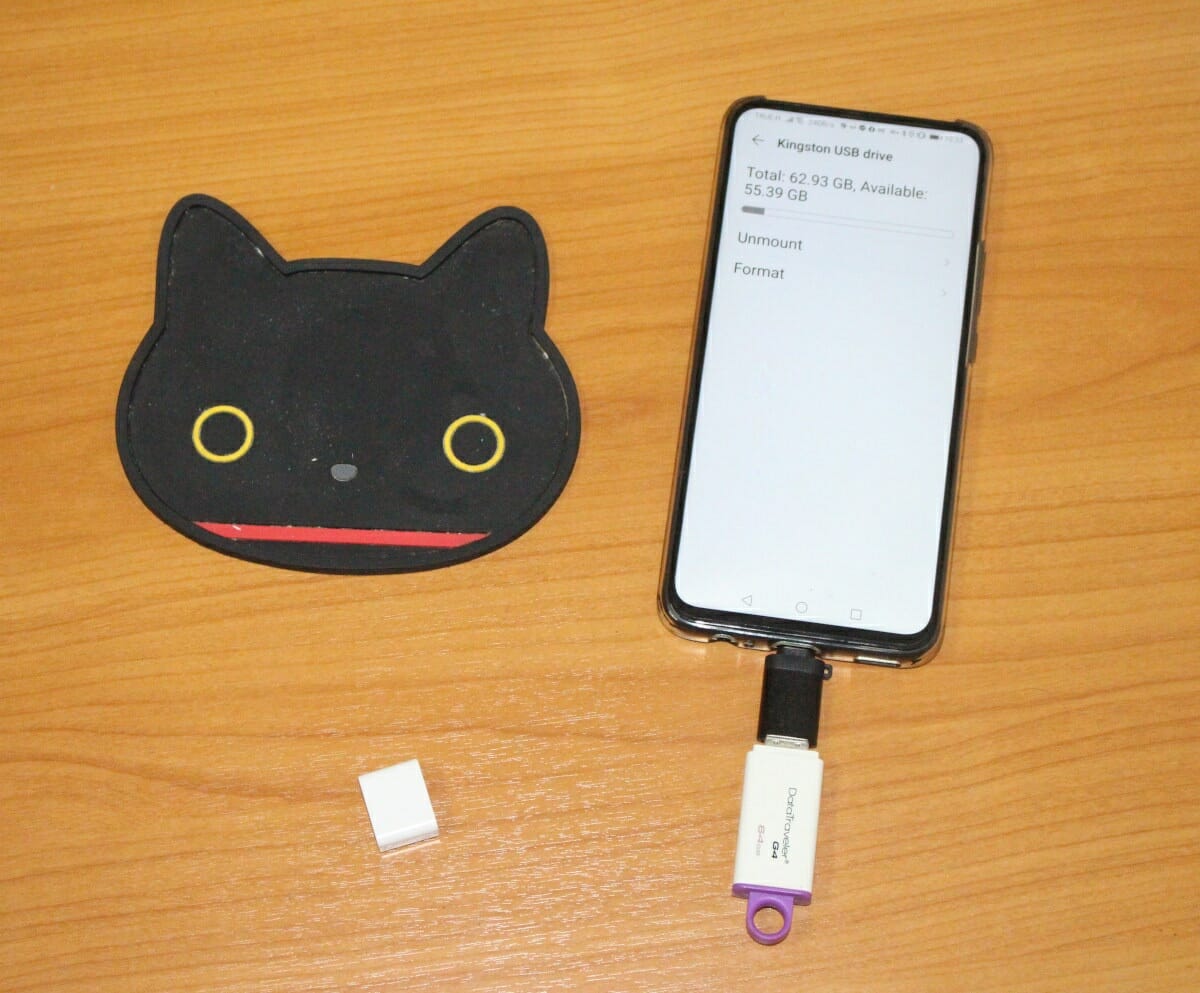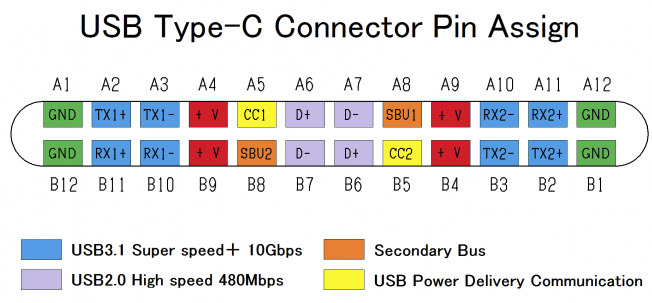MINIX NEO P1 is a 66W USB-C power supply/charger that can handle up to 3 devices, but I’m already using its big brother NEO P2 (100W) to power single board computers or other compatible devices that I may have to review.
So instead, I plugged it in my bedroom’s power extension since it’s so tiny and provides three extra USB ports for charging devices. The problem is that two of those are USB-C ports, and I don’t own any USB-C to USB-C cable, so I went shopping for such cables, but soon realized I could probably “save money” by purchasing USB-C to USB-A adapters for less than one dollar each as I already own several USB-A to USB-C / micro USB cables.
I got two of those and inserted them in the tiny USB PD charger. Spacing between the two USB-C ports was wide enough to the adapter fitted just right, and it looks great!
So let’s try to charge a smartwatch… hmmm it does not work… using the other port yields the same result. Nevermind maybe just an incompatibility issue. So let’s switch to a phone, and… still not charging. Is there a problem with the adapters?
Nope. I can plug in and mount a 64GB USB flash drive without issues… it then dawned on me that I had no thought through that USB Power Delivery requires negotiation, and a USB Type-A connector does not route all necessary signals:
The USB Power Delivery (PD) Specification describes a standard negotiation process for establishing all PD power contracts. Although the USB Type-C standard allows for providing 5 V at up to 15 W of power, following the PD protocol is critical for offering or receiving any voltage higher than 5 V. As a result, any product that requires or delivers power from 5 to 20 V (15 to 100 W of power) must negotiate according to a specific set of standardized rules.
Notably, the CC1 and CC2 pin won’t be available on a USB 3.0 Type-A port, and that should be the main problem as the charger would not even know a device has been plugged in. One would think a safe 5V could be outputted by default, but no. I still double checked with MINIX and they confirmed this would not work:
That is to be expected, it’s not possible to connect USB-C to USB-A adapters to the USB-C ports on NEO P1.
The NEO P1 charger will not detect any connection via the adapters
OK. Lesson learned!

Jean-Luc started CNX Software in 2010 as a part-time endeavor, before quitting his job as a software engineering manager, and starting to write daily news, and reviews full time later in 2011.
Support CNX Software! Donate via cryptocurrencies, become a Patron on Patreon, or purchase goods on Amazon or Aliexpress







